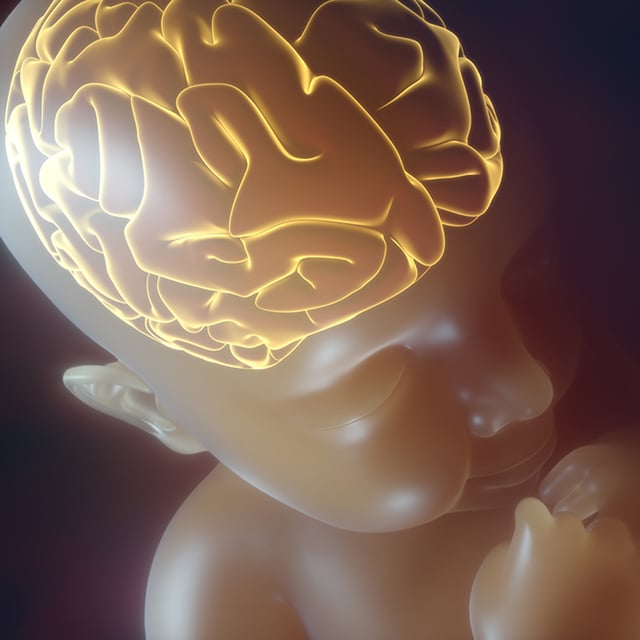Staff superheroes
It’s a bird. It’s a plane. It’s a window washer! Dressed as a superhero to clean and brighten your day.


Neonatal hypoxic-ischemic encephalopathy (HIE) is a type of brain dysfunction that occurs when the brain doesn't receive enough oxygen or blood flow for a period of time. Hypoxic means insufficient oxygen, ischemic means insufficient blood flow, and encephalopathy means brain disorder.
HIE can impact the central nervous system, causing neurological and developmental issues. Some children with HIE experience no health issues or only mild to moderate effects. Others have severe, permanent disability, such as serious developmental delays, cerebral palsy, epilepsy or cognitive impairment.
For various reasons, HIE may develop during pregnancy, labor and delivery, or the postnatal period. If the brain's blood or oxygen supply has been interrupted, the rest of the body may also have been starved of oxygen. This may damage other organs, including the heart, liver, kidneys and intestines. These organs usually return to normal function, but if the brain has sustained an injury, it may not fully recover. The length of time the brain was without oxygen usually determines the severity of the damage.

One of the nation's best for neurology & neurosurgery

Ranked among the nation's best in 11 specialties
This brain injury may occur during fetal development, labor and delivery, or the postnatal period. During pregnancy, possible causes of HIE include:
Potential causes of HIE during labor and delivery can include:
Causes of HIE after delivery can include:
Symptoms generally depend on the severity and extent of the brain injury, as well as which areas of the brain were affected. Babies born with HIE may:
HIE may be suspected if:
To confirm a diagnosis of HIE, a neurologist will examine your baby. An electroencephalogram (EEG) will be used to monitor for seizures and signs of brain dysfunction. In addition, your baby may undergo neuroimaging tests, such as magnetic resonance imaging (MRI), to check for signs of brain injury.
Immediate treatment for infants born with HIE involves cooling the baby for three days.
Therapeutic hypothermia for HIE involves lowering the temperature of the brain to minimize the impact of the brain injury. Research has shown that cooling the baby's brain just a few degrees below normal body temperature soon after birth may limit the damage.
For this treatment, your baby will be placed on a cooling blanket for three days, given medications to help ensure comfortable rest and closely monitored for signs of discomfort.
After the cooling period, your baby will be slowly warmed to normal body temperature. UCSF's neuro-intensive care nursery is equipped to provide this cooling treatment to even very fragile babies who require extracorporeal membrane oxygenation, (ECMO), a type of heart-lung bypass used to support respiratory failure in newborns.
While caring for your baby, we will monitor their heart rate, breathing patterns and temperature. During the cooling procedure, we will also check your baby's brain activity with an electroencephalogram (EEG) and a cerebral function monitor. In addition, we will watch for signs of seizures using a video camera.
Blood tests will also be performed to assess other aspects of health, such as whether your baby has infections or metabolic problems.
During the cooling period, it's normal for your baby to have slower heart and breathing rates, and to appear quiet and sleepy. Your baby will receive nutrition through intravenous (IV) therapy. If the nurse determines that it's safe, you may touch your baby – and may even be able to hold them – during the cooling period.
After cooling, when your baby is ready, they'll get breast milk or formula. Breastfeeding mothers will receive accommodations and assistance with pumping and storing milk.
At the end of the cooling period, you'll meet with the medical team to review the results of your baby's tests.
In addition to the cooling treatment, your baby may receive therapies to support any other organs affected by HIE. Depending on your baby's needs, this may include treatments to:
Ongoing treatment, when needed, focuses on helping your child adapt to symptoms caused by HIE and often includes medical, physical and occupational therapies. All babies who receive cooling therapy are eligible for follow-up care through the NICU Follow-up Clinic and the Neonatal Neurology Follow-Up Clinic.
Some families affected by HIE are eligible to join studies that may include long-term follow-up, specialized tests and new treatments. A member of the research team may ask whether you're interested in participating.
UCSF Benioff Children's Hospitals medical specialists have reviewed this information. It is for educational purposes only and is not intended to replace the advice of your child's doctor or other health care provider. We encourage you to discuss any questions or concerns you may have with your child's provider.

UCSF Newborn Brain Research Institute
The Newborn Brain Research Institute promotes brain development and recovery by leveraging clinical excellence, a cutting-edge data hub and innovative basic and clinical research.
Staff superheroes
